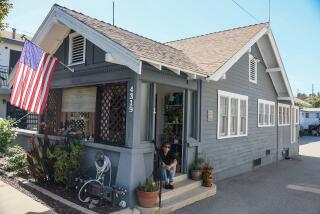Burbank Approves 5 Dead Ends to Block Toluca Lake Shortcuts
- Share via
The Burbank City Council, acceding to a determined campaign by Toluca Lake residents that set off months of angry arguments, voted Tuesday to create cul-de-sacs to block commuter shortcuts through the wealthy neighborhood.
By a 3-1 vote, the council reversed an earlier decision rejecting the blockades, agreeing to block five east-west streets, one less than residents wanted.
The council also voted to establish several raised-curb traffic diverters, allowing one-way traffic to leave the neighborhood but no traffic--except for emergency vehicles--to enter.
The dead ends will be established west of Pass and Olive avenues on National and McFarlane avenues, Toluca Lake Avenue, and Franklin and Hood avenues at an estimated cost of $165,000. Work is scheduled to be completed in January.
Residents had complained for years that motorists speeding through their neighborhoods from nearby crowded thoroughfares were endangering children and pedestrians, and spoiling the peace of the area.
Opponents argued that the blockades were not needed and that allowing one neighborhood to block traffic from public streets was undemocratic and unfair. The debate led to public hearings marked by raucous outbursts.
The council initially decided last month that creating permanent cul-de-sacs was not a desirable solution to traffic problems. Police and fire officials, as well as other city executives, said permanent closures could result in lawsuits against the city if they delayed ambulances or police or fire vehicles in emergencies.
In addition, the council declared a six-month experiment--in which several temporary wooden barricades were set up to reduce traffic--a failure. The barricades were knocked down more than 70 times by impatient motorists, and the city spent about $70,000 replacing them. Motorists also drove over lawns and driveways to get around them.
But Public Works Director Ora Lampman said the concerns of city officials and residents had been taken care of through revised planning. He said a raised-curb diverter behind the alley at Warner Boulevard would keep commuter traffic from coming into the area, while allowing emergency vehicles access.
“They’ll be able to get into any street with no problem,” he said.
The residential neighborhood, made up mostly of single-family homes, is next to the Media District, dominated by several motion picture and television studios.
More to Read
Sign up for Essential California
The most important California stories and recommendations in your inbox every morning.
You may occasionally receive promotional content from the Los Angeles Times.














